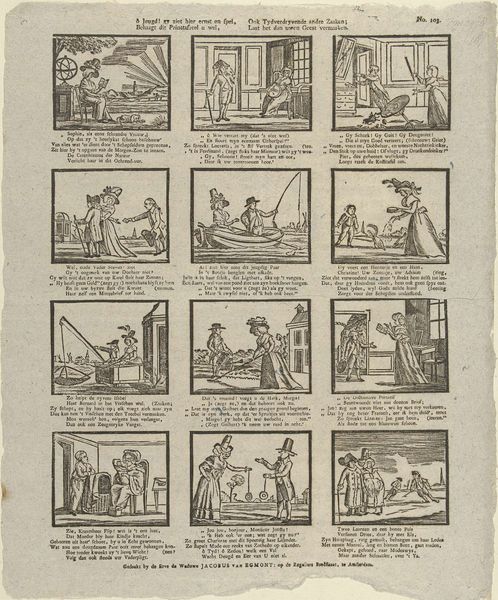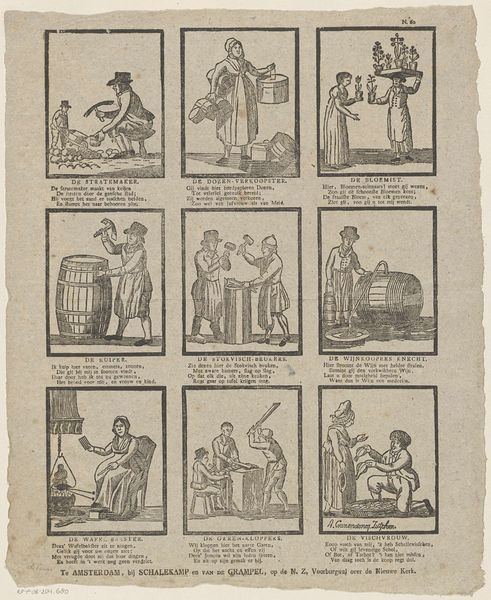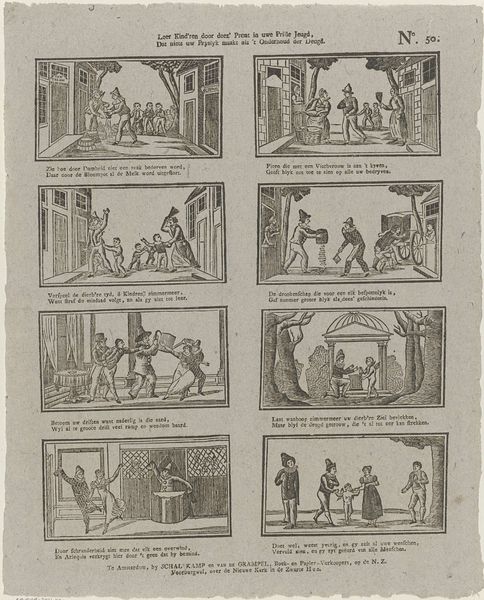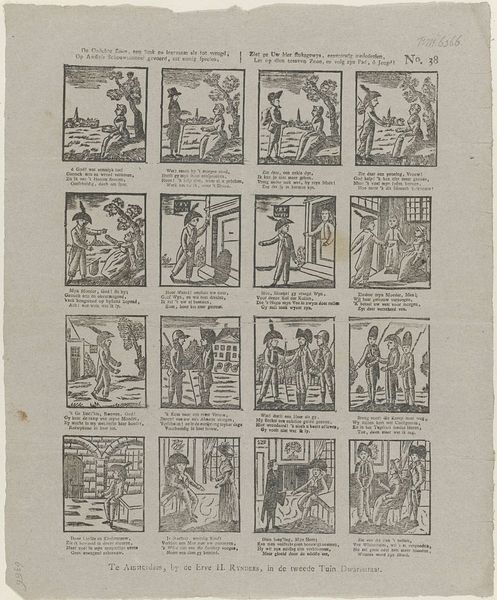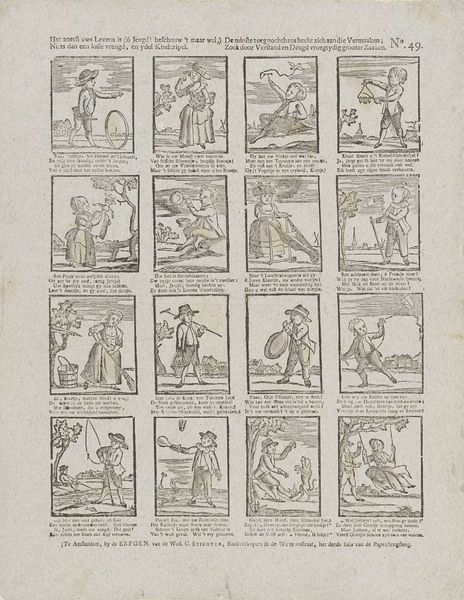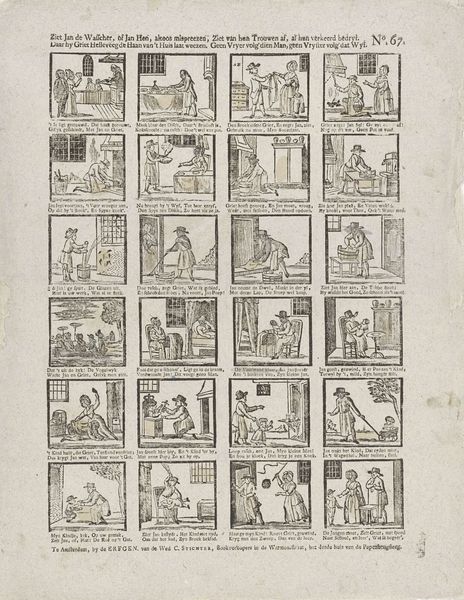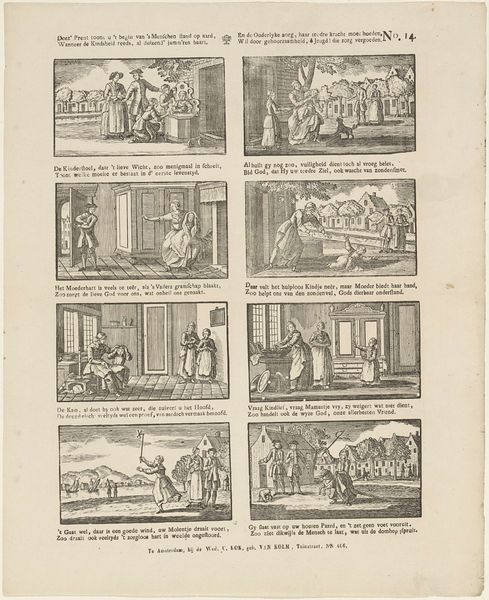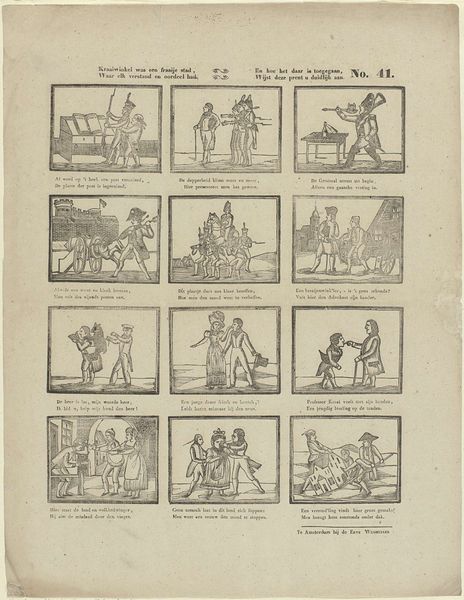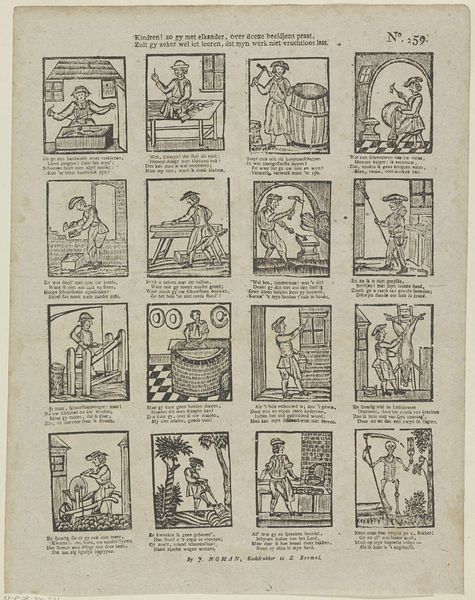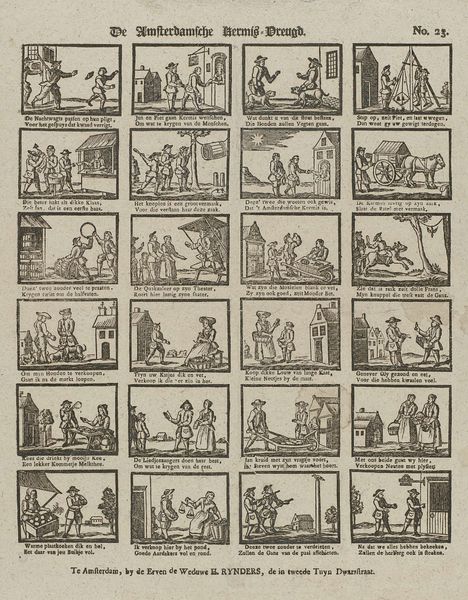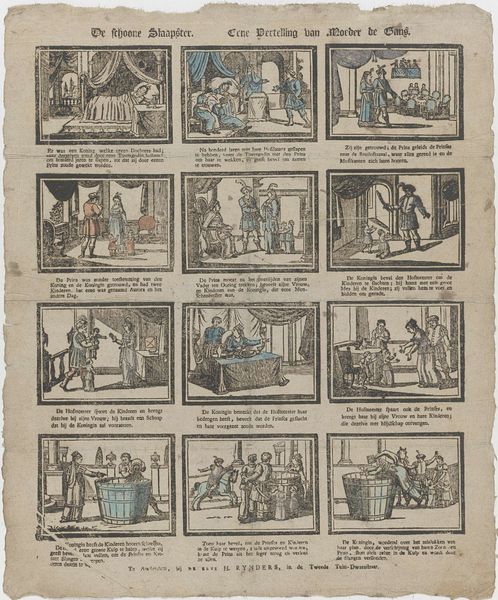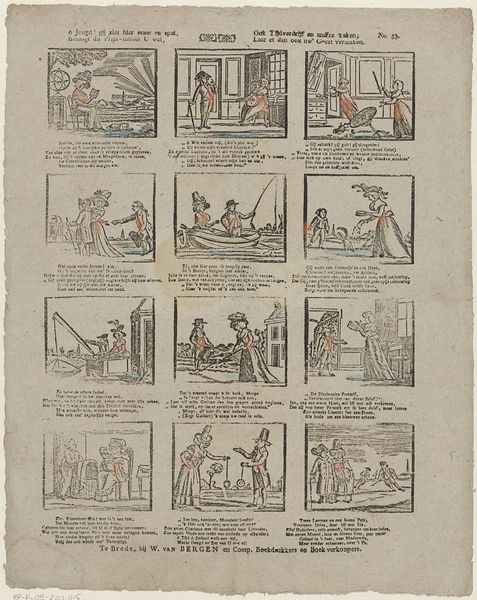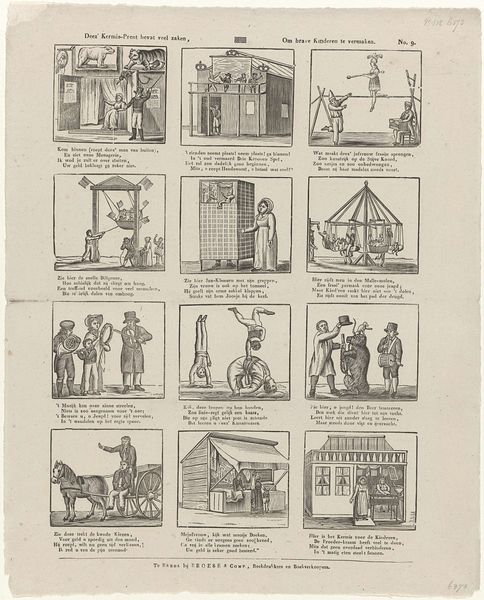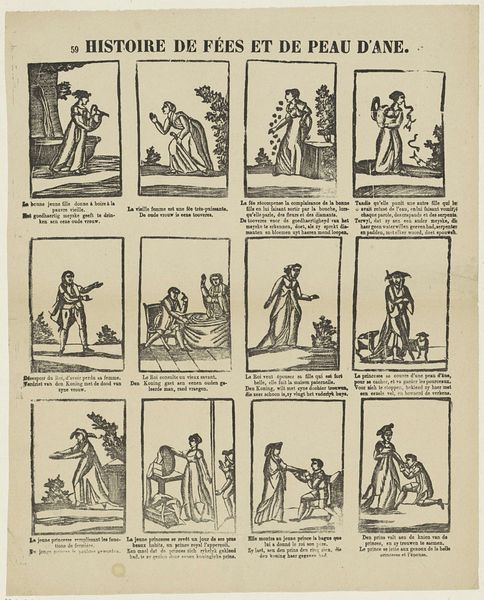
graphic-art, print, etching, engraving
#
graphic-art
#
comic strip sketch
#
narrative-art
# print
#
etching
#
old engraving style
#
personal sketchbook
#
sketchwork
#
ink drawing experimentation
#
geometric
#
pen-ink sketch
#
pen work
#
sketchbook drawing
#
genre-painting
#
storyboard and sketchbook work
#
sketchbook art
#
engraving
Dimensions: height 418 mm, width 330 mm
Copyright: Rijks Museum: Open Domain
Editor: We're looking at "Beroepen en ambachten," or "Professions and Trades," an etching by Alexander Cranendoncq, created sometime between 1822 and 1849. It's a print, showing a grid of little scenes, each depicting a different occupation. It has an almost cartoonish and folksy mood. What stands out to you in terms of composition and form? Curator: The visual construction relies heavily on a clear separation of form and ground. Observe the distinct rectangles, each acting as a proscenium stage, framing these activities. The linear quality of the etching, a network of strokes forming both shape and shading, generates a unique spatial dimension. Each frame becomes a study in figure-ground relationships, influencing how we perceive individual stories and their collective presentation. It begs the question, how do these choices impact the reading of the narrative? Editor: So, by isolating each scene, are we encouraged to see each profession as an individual contribution to society, almost like a series of independent studies of work? Curator: Precisely. Consider the function of line within each frame. It is not merely descriptive; rather, it structures space, defines volume, and signifies texture. Note, too, the minimal cross-hatching used to model form and the stark contrast it creates, thereby calling attention to its inherent artifice. How might you interpret this stylistic decision, devoid of the embellishments of academic realism? Editor: It creates a simple, clear message: 'This is what they do’. I can also imagine this piece of graphic art might have been used as a teaching aid. What did you learn? Curator: I learned that breaking it down into its component parts and considering the relationship of the part to the whole is what stood out to me the most.
Comments
No comments
Be the first to comment and join the conversation on the ultimate creative platform.
